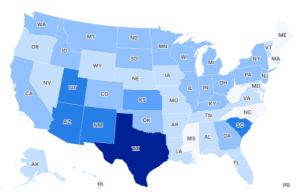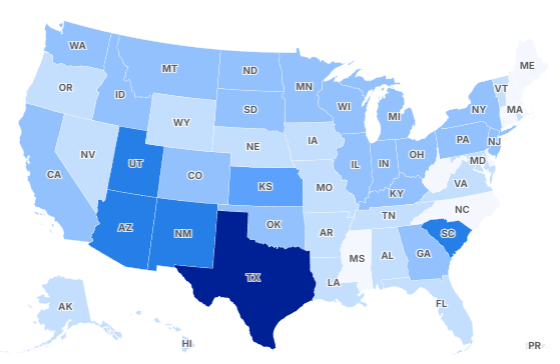Growing Tensions Inside GOP as Recess Approaches
The summer recess in Washington, D.C. is often a time for lawmakers to return to their states, reset their agendas, and prepare for the legislative battles ahead. But this year, it’s shaping up to be anything but routine.
As President Donald Trump pushes to fill over 130 vacant positions in his administration, he has encountered unexpected resistance—not from Democrats, but from within his own party. What began as a procedural question is now spiraling into a broader power struggle between the executive branch and Senate Republicans.
A Contested Strategy
President Trump is exploring the possibility of making recess appointments—a rarely used constitutional maneuver that allows the president to temporarily install nominees without Senate approval if both chambers of Congress agree to adjourn for at least 10 days.
However, Senate Republicans have no intention of letting that happen.
According to multiple senators, including senior GOP voices, the Senate plans to hold pro forma sessions during the recess. These brief, symbolic meetings are designed to block recess appointments by technically keeping the Senate “in session.”
Senator Thom Tillis was blunt: “That’s bypassing one of the unique responsibilities of the U.S. Senate.”
His comment reflects more than just a procedural disagreement. It hints at a larger ideological divide over how aggressively the party should support Trump’s efforts to reshape the federal government.
Behind Closed Doors
Despite mounting frustration over stalled confirmations, GOP leadership has opted for caution. The reason? Trust. Or more precisely, the lack of it.
Tillis specifically mentioned his concern about one particular nominee: Ed Martin, tapped for a high-level legal post in Washington, D.C. Tillis made clear he would block Martin’s appointment and raised concerns about the quality of advice the president is receiving.
“I’m not really impressed with some of the advice the president’s getting,” he added.
These comments signal that for some Republican senators, blocking recess appointments isn’t about defying Trump—it’s about preserving the Senate’s role in vetting nominees, especially those seen as politically risky or ideologically extreme.
How Recess Appointments Work
To legally appoint someone during a congressional recess, the president needs both the House and Senate to adjourn for at least 10 days. The House has already left town. The Senate, however, is using a constitutional workaround: holding occasional pro forma sessions with no actual legislative business.
This tactic prevents the 10-day countdown from beginning and effectively blocks the president from acting unilaterally.
When asked whether Senate Republicans might consider skipping pro forma meetings to give Trump more flexibility, Tillis answered flatly: “No.”
Frustration Builds on the Right
Not all Republicans are on board with blocking the president. Some are openly questioning whether the Senate is sabotaging its own party.
Senator Mike Lee expressed his dissatisfaction on social media, writing:
“The Senate must either (A) vote on Trump’s nominees before recessing or (B) recess without holding ‘pro forma’ sessions that prevent Trump from making recess appointments.”
This sentiment reflects a growing impatience among conservative senators who believe that the Biden-era gridlock has continued under Trump’s return, especially when it comes to non-controversial nominees.
Senator Markwayne Mullin went even further. “I’m for getting the job done,” he said, suggesting that Senate leadership should either cancel the recess or stop blocking the president from filling critical roles.
Mullin also revealed that Senate Minority Whip John Thune is working on a bipartisan deal to move forward with at least some lower-level nominees.
A Political Gamble
Refusing recess appointments may protect the Senate’s institutional powers—but it also risks inflaming the GOP base.
Conservative voters frustrated with gridlock may view this maneuver as another example of the “establishment” dragging its feet while Democrats exploit every procedural tool available. Already, some commentators on the right are suggesting that the GOP is failing to stand behind its own president.
The White House, meanwhile, has made it clear it expects movement. Trump has not ruled out continuing to push for recess appointments or publicly pressuring Senate leaders to act.
Whether the president escalates the dispute in public remains to be seen—but the internal pressure is clearly mounting.
Long-Term Stakes
There’s also a broader constitutional question at play. Recess appointments, while legal, are controversial. Appointees can serve until the next congressional session concludes—in this case, through January 3, 2027—without ever receiving Senate confirmation.
That prospect has made even Trump-friendly senators nervous. Many worry that using the tactic too freely could undermine the Senate’s long-term authority in the confirmation process.
But for Trump supporters and members of his inner circle, that concern may sound academic. Their focus is on the here and now: filling critical posts, implementing their agenda, and bypassing what they see as obstructionist politics.
What Happens Next
Unless a last-minute agreement is reached, the Senate will likely continue holding pro forma sessions—effectively slamming the door shut on recess appointments. For now.
But the internal divide within the Republican Party is harder to paper over.
The next few weeks may not just determine how quickly Trump can fill his team. They may define the boundaries of power inside the party—and clarify whether Senate Republicans are truly aligned with the man they helped put back in the White House.

Emily Johnson is a critically acclaimed essayist and novelist known for her thought-provoking works centered on feminism, women’s rights, and modern relationships. Born and raised in Portland, Oregon, Emily grew up with a deep love of books, often spending her afternoons at her local library. She went on to study literature and gender studies at UCLA, where she became deeply involved in activism and began publishing essays in campus journals. Her debut essay collection, Voices Unbound, struck a chord with readers nationwide for its fearless exploration of gender dynamics, identity, and the challenges faced by women in contemporary society. Emily later transitioned into fiction, writing novels that balance compelling storytelling with social commentary. Her protagonists are often strong, multidimensional women navigating love, ambition, and the struggles of everyday life, making her a favorite among readers who crave authentic, relatable narratives. Critics praise her ability to merge personal intimacy with universal themes. Off the page, Emily is an advocate for women in publishing, leading workshops that encourage young female writers to embrace their voices. She lives in Seattle with her partner and two rescue cats, where she continues to write, teach, and inspire a new generation of storytellers.









